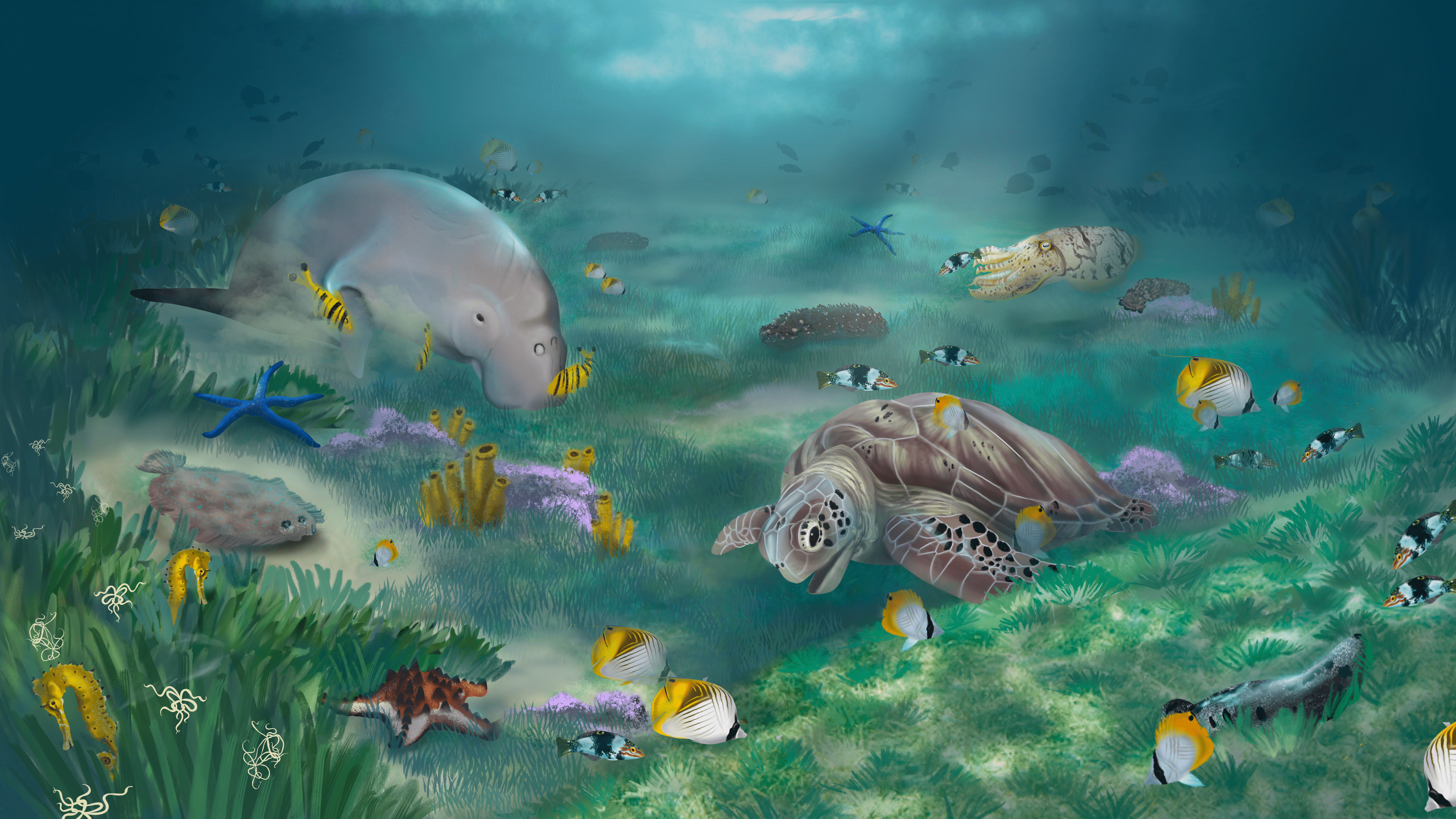Seagrass meadows are a unique biome. They are formed of a network of seagrass beds that are not seaweed, but species more closely related to land flowering plants. They are one of the most productive ecosystems in the world and are found in salty and brackish waters, typically along gently sloping coastlines. In India, they are located in the Gulf of Mannar, Palk Bay, Andaman and Nicobar Islands, Lakshadweep Islands and the Gulf of Kutch. Seagrass ecosystems provide shelter, nursery, and nutrition to a wide array of marine species, ranging from tiny invertebrates to marine mammals and birds.

Dugong, green sea turtle, octopus, squid, cuttlefish, snails, polychaete worms, sea anemones, sea urchins
Seagrasses are usually referred to as ecosystem engineers due to their ability to change environments, resulting in unique habitats. Ecologically, seagrass meadows are champions at sequestering carbon, accounting for about 10 per cent of the ocean's capacity to store carbon while only covering about 0.2% of the earth's surface. Hence, the survival and presence of these ecosystems are important to our battle with climate change. A plethora of species find shelter in the seagrass ecosystems and depend on these areas for nursery and as a source of food. In addition to their biological support to marine life, they also protect coastlines by absorbing wave energy, improve water quality by absorbing nutrients, stabilise sediment and act as a barrier that soaks up harmful human-caused runoff from entering the ocean.